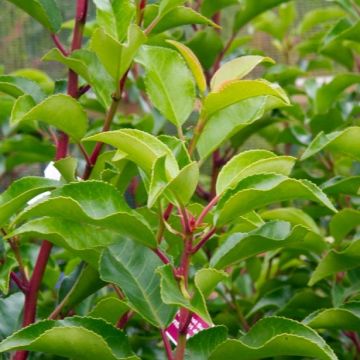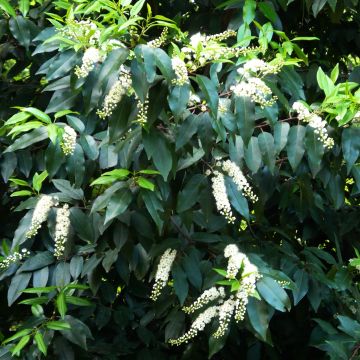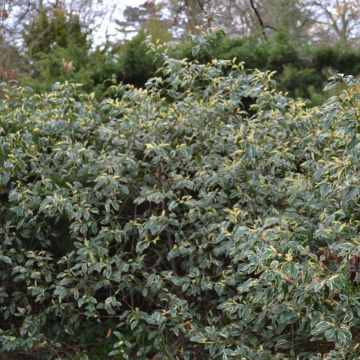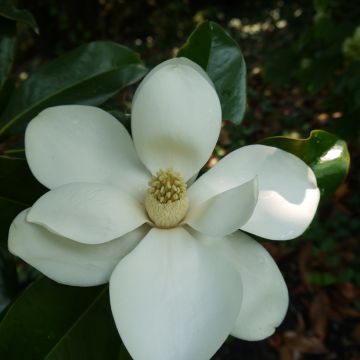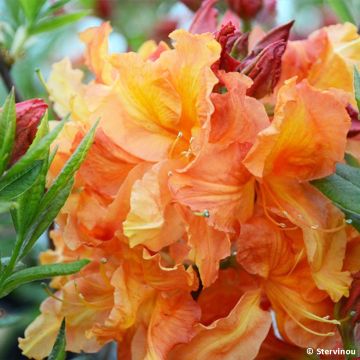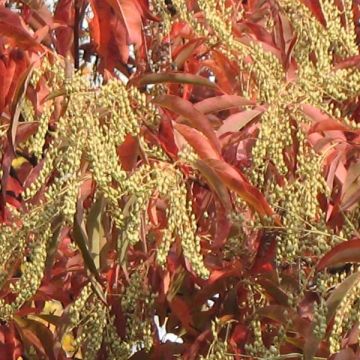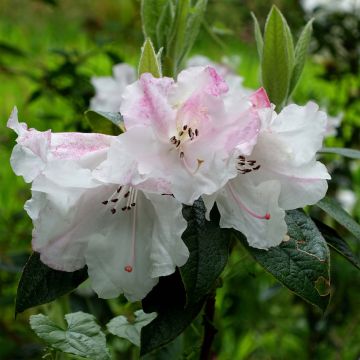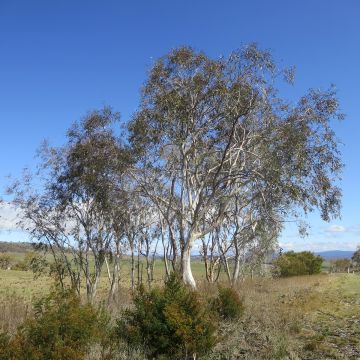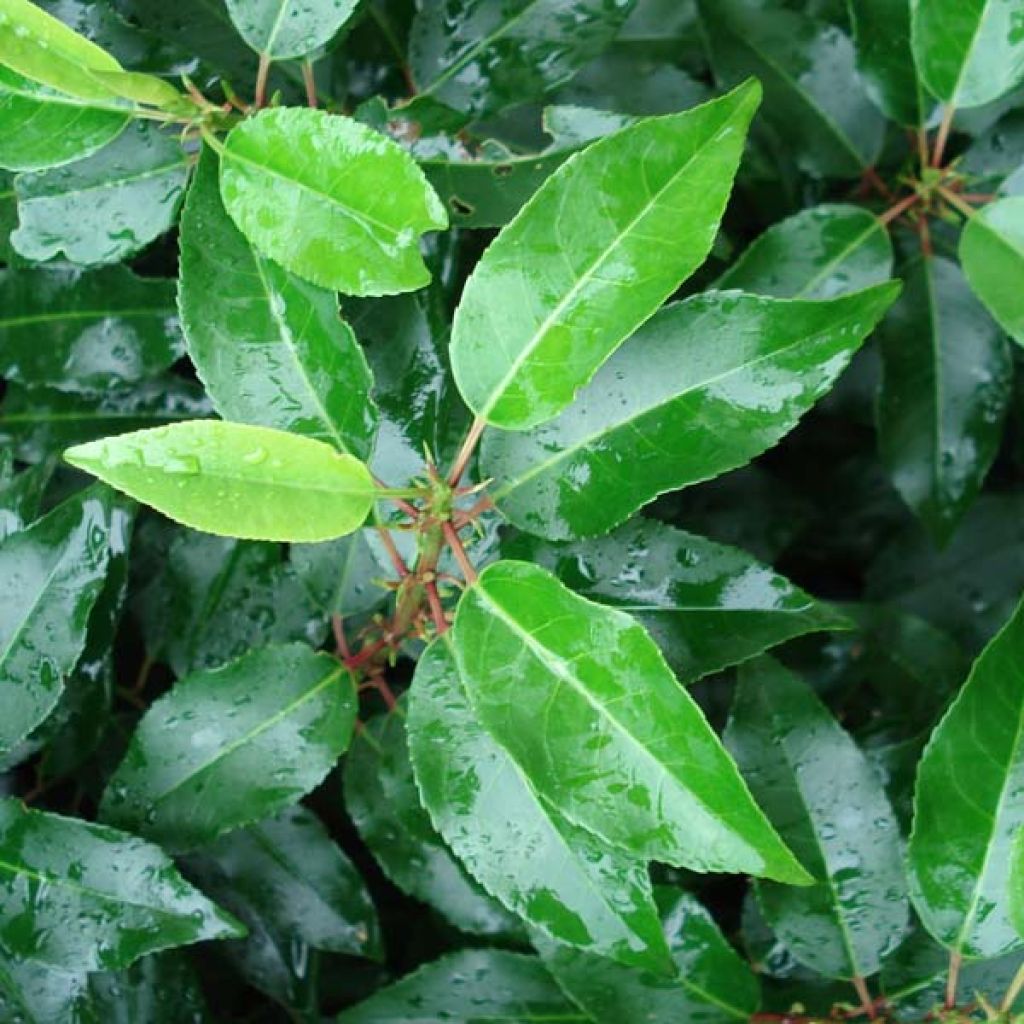

Prunus lusitanica Angustifolia - Portuguese Laurel
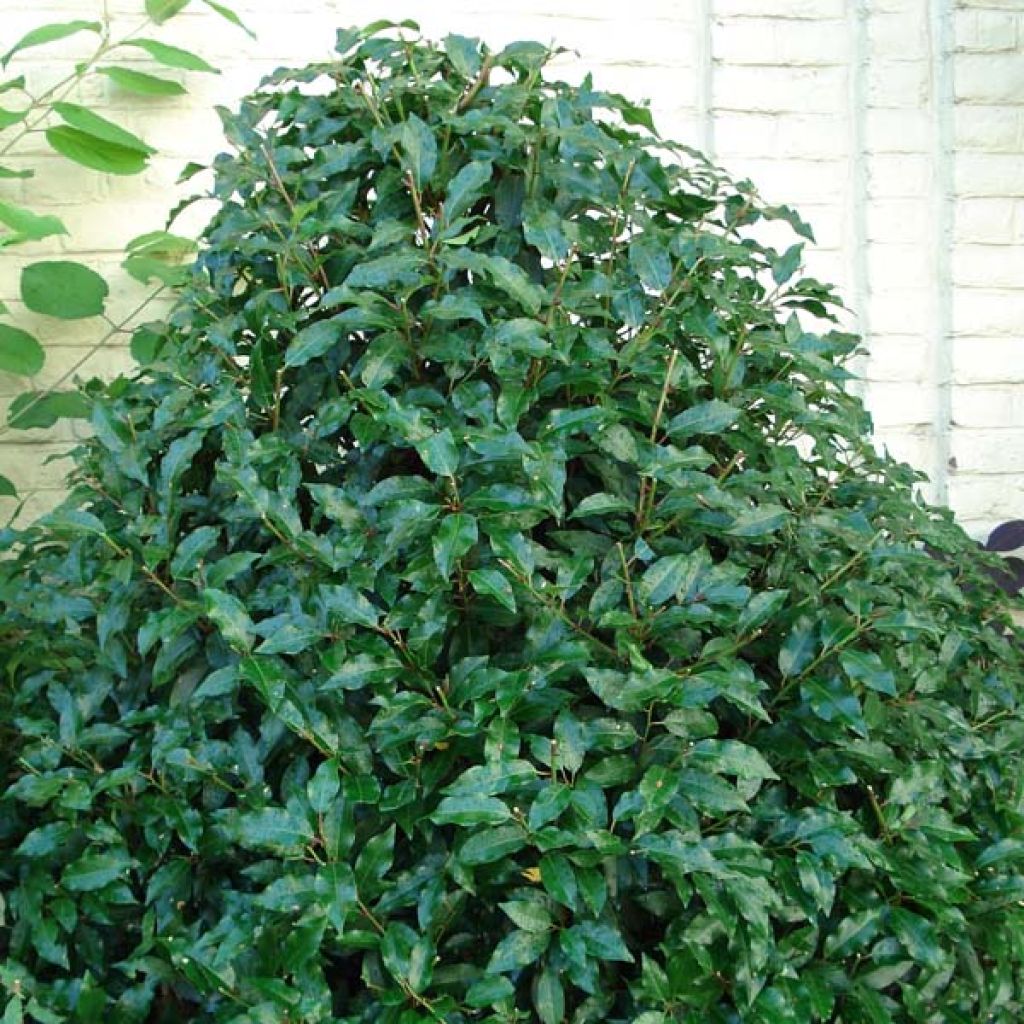

Prunus lusitanica Angustifolia - Portuguese Laurel
Prunus lusitanica Angustifolia - Portuguese Laurel
Prunus lusitanica Angustifolia
Portugal Laurel, Azores Laurel
This item cannot be shipped to the selected country
Delivery charge from €5.90
Delivery charge from €5.90
Delivery charge from €5.90
Delivery to Corse prohibited
More information
Schedule delivery date,
and select date in basket
This plant carries a 24 months recovery warranty
More information
We guarantee the quality of our plants for a full growing cycle, and will replace at our expense any plant that fails to recover under normal climatic and planting conditions.
From €5.90 for pickup delivery and €6.90 for home delivery
Express home delivery from €8.90.
From €5.90 for pickup delivery and €6.90 for home delivery
Express home delivery from €8.90.
From €5.90 for pickup delivery and €6.90 for home delivery
Express home delivery from €8.90.
Delivery to Corse prohibited: UE law prohibits the import of this plant from mainland France to Corse as part of the fight against Xylella fastidiosa. Please accept our sincere apologies.
More information

Does this plant fit my garden?
Set up your Plantfit profile →
Description
The Prunus lusitanica 'Angustifolia' is a variety of Portuguese Laurel selected for its compact growth and fine foliage. This evergreen bush has a dense and regular conical habit, adorned with glossy leaves, and has a strong presence throughout the year. In spring, it is covered with fragrant white panicles buzzing with bees, which are clearly visible against the foliage. Low-maintenance, water-efficient, and tolerant of pruning, this Portuguese laurel makes an excellent hedge or large shrub for mass planting.
The Portuguese Laurel, scientifically known as Prunus lusitanica, is a bush belonging to the rose family, native to Spain and Portugal.
The 'Angustifolia' cultivar stands out for its reduced vigour, dense habit, and narrow leaves. It reaches approximately 3m (9.8ft) in height and 1.50m (4.9ft) in spread at the age of 10 years and can reach up to 4m (13.1ft) in height under favourable conditions. Its growth rate is moderate. Its red branches bear elongated, dentate, highly glossy evergreen leaves that are slightly folded along the central vein. The leaves are dark green on the upper surface and lighter underneath. In May or June, depending on the region, it produces fragrant, nectar-rich, cup-shaped white flowers, arranged in narrow pendulous clusters that are 20 to 25cm (9.8in) long. The fruits consist of small ovate berries, 8mm (0.3in) in size, initially red but turning dark purple and then black, which are highly toxic if ingested.
The Portuguese Laurel 'Angustifolia' thrives in deep, well-drained soil, particularly in warm regions. It adapts well to oceanic climates but also tolerates hotter regions. It is often used as an evergreen hedge, either trimmed or untrimmed, in combination with Photinias, Eleagnus ebbingei, Cotoneaster lacteus or C. franchetii, for example. With its naturally conical silhouette, it requires minimal shaping. It can also be planted as a solitary specimen and trained into a pyramid or ball shape.
Tips: Avoid pruning at the beginning of the season to fully enjoy the flowering.
Report an error about the product description
Prunus lusitanica Angustifolia - Portuguese Laurel in pictures
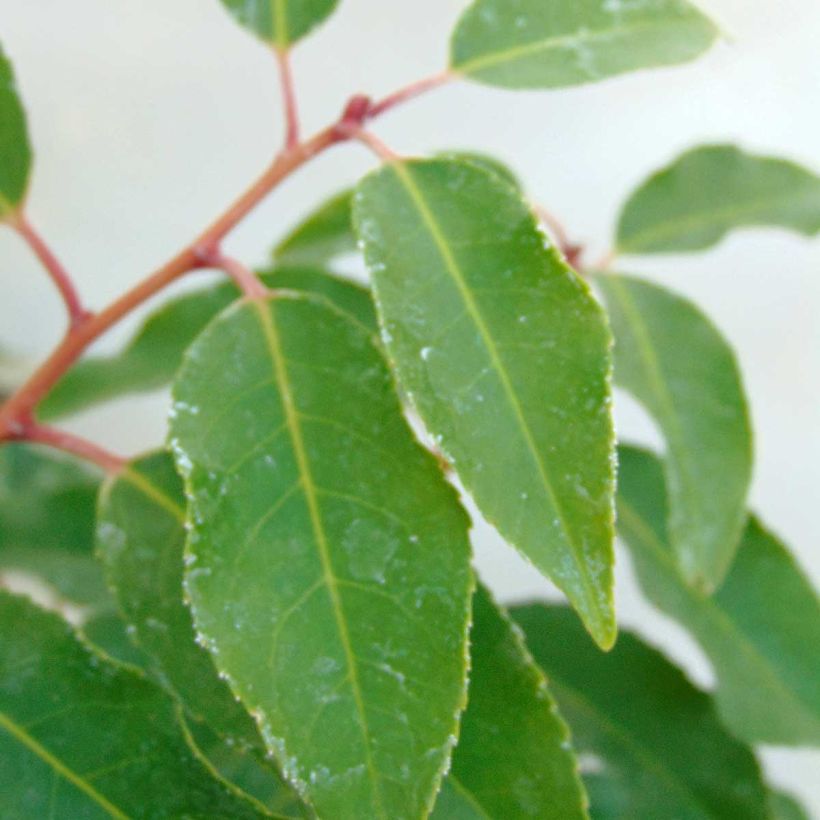

Plant habit
Flowering
Foliage
Botanical data
Prunus
lusitanica
Angustifolia
Rosaceae
Portugal Laurel, Azores Laurel
Mediterranean
Other Portuguese laurel
Planting and care
The Prunus lusitanica Angustifolia is best planted from February to May, in any deep, fertile, well-worked soil, even chalky, moist to dry in summer, in full sun. In a hedge, maintain a distance of 1m (3.3ft) between plants. In cold regions, choose a location sheltered from cold and strong winds. You can prune after flowering to keep the plant compact. It can withstand temperatures as low as -15°C (5°F) and does not require watering once well rooted. Attacks from aphids or scale insects are possible in summer.
Planting period
Intended location
Care
-
, onOrder confirmed
Reply from on Promesse de fleurs
Evergreen shrubs
Haven't found what you were looking for?
Hardiness is the lowest winter temperature a plant can endure without suffering serious damage or even dying. However, hardiness is affected by location (a sheltered area, such as a patio), protection (winter cover) and soil type (hardiness is improved by well-drained soil).

Photo Sharing Terms & Conditions
In order to encourage gardeners to interact and share their experiences, Promesse de fleurs offers various media enabling content to be uploaded onto its Site - in particular via the ‘Photo sharing’ module.
The User agrees to refrain from:
- Posting any content that is illegal, prejudicial, insulting, racist, inciteful to hatred, revisionist, contrary to public decency, that infringes on privacy or on the privacy rights of third parties, in particular the publicity rights of persons and goods, intellectual property rights, or the right to privacy.
- Submitting content on behalf of a third party;
- Impersonate the identity of a third party and/or publish any personal information about a third party;
In general, the User undertakes to refrain from any unethical behaviour.
All Content (in particular text, comments, files, images, photos, videos, creative works, etc.), which may be subject to property or intellectual property rights, image or other private rights, shall remain the property of the User, subject to the limited rights granted by the terms of the licence granted by Promesse de fleurs as stated below. Users are at liberty to publish or not to publish such Content on the Site, notably via the ‘Photo Sharing’ facility, and accept that this Content shall be made public and freely accessible, notably on the Internet.
Users further acknowledge, undertake to have ,and guarantee that they hold all necessary rights and permissions to publish such material on the Site, in particular with regard to the legislation in force pertaining to any privacy, property, intellectual property, image, or contractual rights, or rights of any other nature. By publishing such Content on the Site, Users acknowledge accepting full liability as publishers of the Content within the meaning of the law, and grant Promesse de fleurs, free of charge, an inclusive, worldwide licence for the said Content for the entire duration of its publication, including all reproduction, representation, up/downloading, displaying, performing, transmission, and storage rights.
Users also grant permission for their name to be linked to the Content and accept that this link may not always be made available.
By engaging in posting material, Users consent to their Content becoming automatically accessible on the Internet, in particular on other sites and/or blogs and/or web pages of the Promesse de fleurs site, including in particular social pages and the Promesse de fleurs catalogue.
Users may secure the removal of entrusted content free of charge by issuing a simple request via our contact form.
The flowering period indicated on our website applies to countries and regions located in USDA zone 8 (France, the United Kingdom, Ireland, the Netherlands, etc.)
It will vary according to where you live:
- In zones 9 to 10 (Italy, Spain, Greece, etc.), flowering will occur about 2 to 4 weeks earlier.
- In zones 6 to 7 (Germany, Poland, Slovenia, and lower mountainous regions), flowering will be delayed by 2 to 3 weeks.
- In zone 5 (Central Europe, Scandinavia), blooming will be delayed by 3 to 5 weeks.
In temperate climates, pruning of spring-flowering shrubs (forsythia, spireas, etc.) should be done just after flowering.
Pruning of summer-flowering shrubs (Indian Lilac, Perovskia, etc.) can be done in winter or spring.
In cold regions as well as with frost-sensitive plants, avoid pruning too early when severe frosts may still occur.
The planting period indicated on our website applies to countries and regions located in USDA zone 8 (France, United Kingdom, Ireland, Netherlands).
It will vary according to where you live:
- In Mediterranean zones (Marseille, Madrid, Milan, etc.), autumn and winter are the best planting periods.
- In continental zones (Strasbourg, Munich, Vienna, etc.), delay planting by 2 to 3 weeks in spring and bring it forward by 2 to 4 weeks in autumn.
- In mountainous regions (the Alps, Pyrenees, Carpathians, etc.), it is best to plant in late spring (May-June) or late summer (August-September).
The harvesting period indicated on our website applies to countries and regions in USDA zone 8 (France, England, Ireland, the Netherlands).
In colder areas (Scandinavia, Poland, Austria...) fruit and vegetable harvests are likely to be delayed by 3-4 weeks.
In warmer areas (Italy, Spain, Greece, etc.), harvesting will probably take place earlier, depending on weather conditions.
The sowing periods indicated on our website apply to countries and regions within USDA Zone 8 (France, UK, Ireland, Netherlands).
In colder areas (Scandinavia, Poland, Austria...), delay any outdoor sowing by 3-4 weeks, or sow under glass.
In warmer climes (Italy, Spain, Greece, etc.), bring outdoor sowing forward by a few weeks.


































